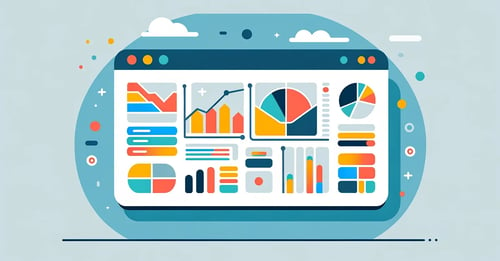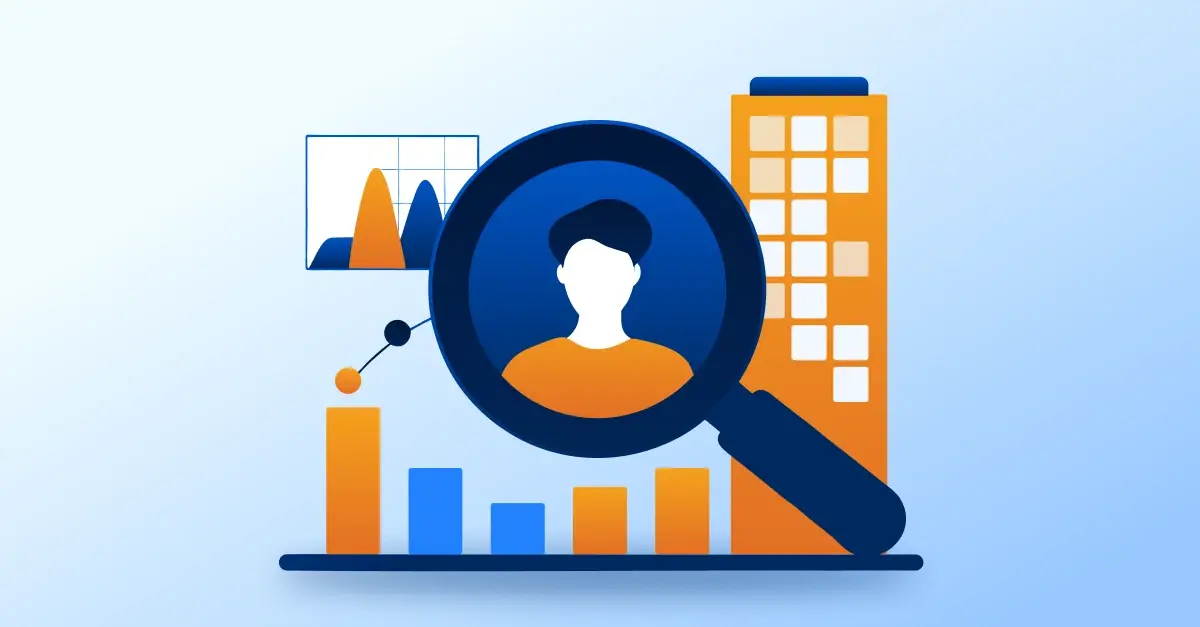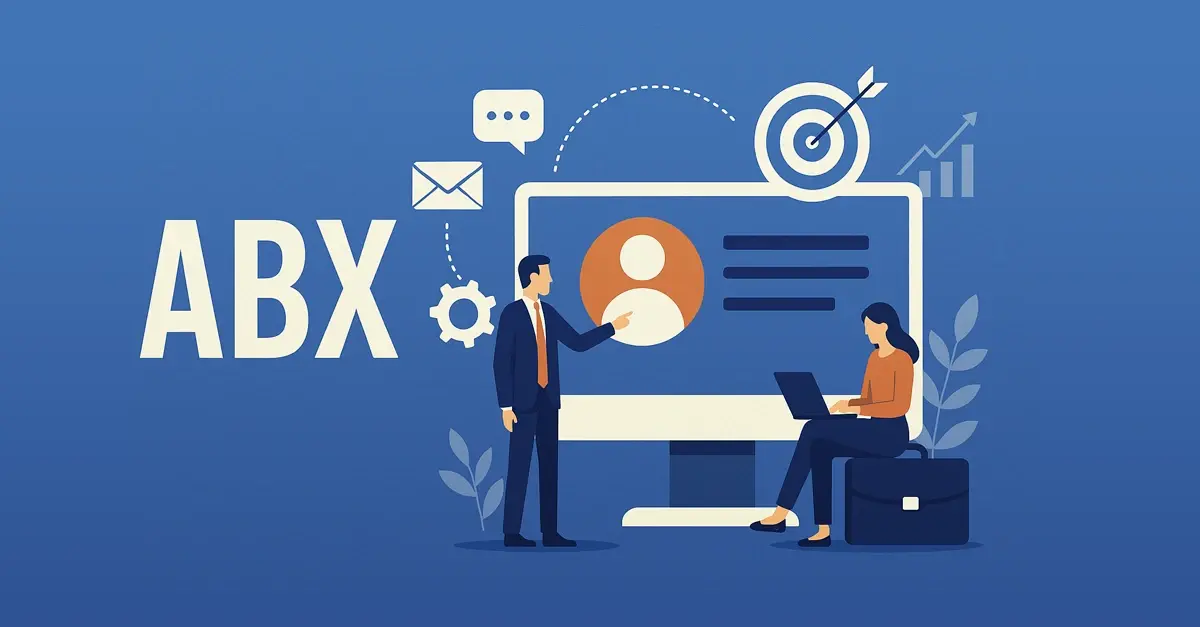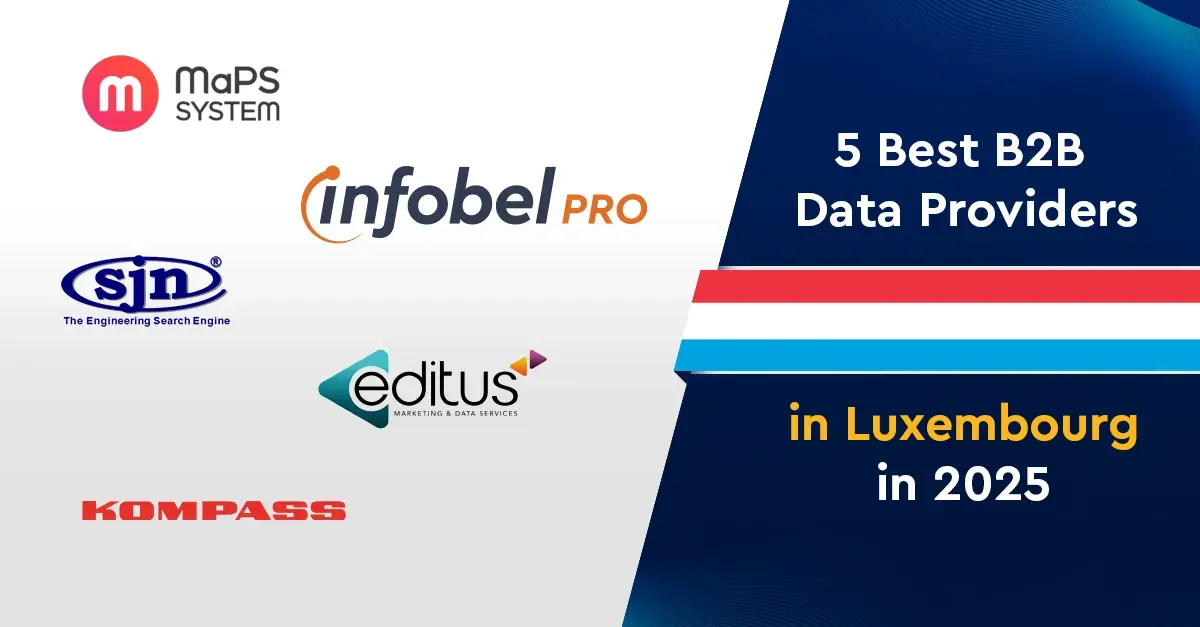From the very first companies that started taking advantage of advertising and marketing, data has played a major role in helping companies connect with their clients. In the past, companies relied on intuition and personal experience for insights.
But with the advent of tailor-made technology, businesses now leverage modern data collection methods to maximize marketing budgets and connect with clients on a more personal level.
Some examples include targeted advertising, personalized emails, and predictive analytics, but amongst these strategies, data-driven marketing stands out as a game-changer.
This approach involves collecting, analyzing, and using data to make strategic marketing decisions. For instance, companies like Amazon have been using data-driven marketing to recommend products based on customer browsing history, resulting in a significant increase in sales.
By understanding what data-driven marketing is and how it works, businesses can unlock a world of possibilities for growth and innovation in today's competitive landscape.

What is data-driven marketing?
Data-driven marketing involves leveraging customer data to enhance advertising and personalized communication strategies. It focuses on refining brand messaging by analyzing customer insights.
Marketers utilizing data-driven approaches aim to anticipate customer preferences, aspirations, and upcoming actions. The objective is to empower marketing teams by customizing their tactics reaching the audience with relevant content at the optimal moment across suitable platforms.
Data-Driven Marketing Approach
The major principle of data-driven marketing is collecting, analyzing and utilization of data to make informed decisions.
Information about the customer is collected from different sources, like interacting with customers, visiting websites, social media interactions, and other external databases.
This data is analyzed to get a grasp of patterns and trends that may be helpful in making decisions. The data collected from the analysis are the keys that will help companies develop detailed marketing messages, select communication channels, optimize budgets, and overall, increase customer engagement and retention.
Data-driven marketing, in turn, requires continuous assessment and optimization too. Through continual assessment of the outcomes resulting from marketing activities, businesses can make modifications and refine the strategies in a real-time manner, addressing customer’s behaviors and market trends that constantly change. The loop of data collection, analysis, and use, makes marketing strategies trendy and productive.

Types of Data-Driven Marketing
The form that data-driven marketing takes, could depend on the type of data used and the specific strategy under discussion.
Some common types of data-driven marketing include:
- Customer Segmentation
Marketers can utilize customer data for consumer segmentation, allowing them to target different groups with customized marketing messages. This data can include demographic information, purchasing behavior, or even psychographic data. - Predictive Analytics
Marketers and businesses can build statistical models and forecasting techniques on customer data to foresee the future needs and behaviors of customers.
It can therefore help companies understand customer needs in advance and design forward-looking marketing strategies. - Personalization
Companies can utilize data to craft targeted marketing messages and offers to each customer based on past interactions and preferences.

Differences Between Data-Driven Marketing and Traditional Marketing
To begin with, the main distinction between data-driven marketing and traditional marketing lies in their decision-making processes and data-gathering methodologies.
Traditional marketing typically relies on broad strategies that include using well-known marketing slogans and catchphrases.
These approaches are often developed based on information from focus groups, direct searches, opinion polls, assumptions, and sometimes even hearsay.
In contrast, data-driven marketing emphasizes the use of raw, unfiltered data to make informed decisions. This approach leads to the creation of more specialized, targeted, and personalized marketing campaigns, which are likely to result in a higher return on investment (ROI).
Furthermore, an advantage of data-driven marketing is its enhanced measurability and accountability. Marketers can access detailed data about customers and campaign performance, allowing them to evaluate the effectiveness of various strategies more precisely.
Traditional marketing, on the other hand, may rely on less direct measures to gauge the impact of campaigns, which can offer less specific insight into their effectiveness.
The other important distinction is regarding their adaptive ability. With data-driven marketing, you can make live adjustments in line with the latest data, thereby allowing you to change strategies suddenly in response to emerging trends or a change in customer behavior. Though, at the same time, traditional marketing strategies are rigid, therefore such campaigns are often set in stone, and it’s not easy to make adjustments on the fly.
Taking advantage of Data-Driven Marketing Insights
The insights gained from data-driven marketing are invaluable for businesses looking to stay competitive in a rapidly evolving market.
By understanding customer behaviors, preferences, and pain points, companies can create more effective and efficient marketing strategies or campaigns.
Insights gotten from data can inform every aspect of marketing, from product development and pricing to advertising and customer service.
One of the main lessons that data-driven marketing leads is finding customers who are high-value. Through mining customer data, companies can determine customer segments that bring the largest profits, hence use of resources will become more targeted and communication adjusted to the specific needs of most profitable consumer groups.
Another crucial insight to stay mindful of, is learning about customer lifecycles. Through tracking the customer interactions over time, businesses are able to put the stages of the customer journey into perspective, based on the patterns and trends observed. This means that marketers can communicate the right communication at the right time, accompanying the customer from awareness until they become paying customers.
Through data-driven marketing, the effectiveness of different channels and tactics are measured. The performance of businesses marketing initiatives across various channels provide them with a measure of what works best in the reach of their audience and goal achievement. This is because it enables marketers to have an insight into the expenditure budgets which ultimately results in a higher ROI.

Data-Driven Marketing Strategy and Trends
A data-driven marketing strategy leverages data analysis and insights to inform strategic marketing decisions. This approach differs from traditional marketing strategies, which often rely on intuition and general perceptions of the market.
By embracing data-driven methods, marketers can understand the intricacies of consumer behavior, market dynamics, and campaign performance through meticulous data collection, analysis, and application.
This enables the creation of more targeted, effective, and relevant marketing campaigns, tailored to meet the actual needs and preferences of customers.
Data-Driven Marketing Trends
In recent years, data-driven marketing strategies have significantly changed the game, utilizing data in novel ways to captivate audiences and drive business growth.
A pivotal trend in this evolution is the escalating use of real-time data processing and analysis. This approach enables brands to analyze data, extract actionable insights, and interact with their customers more effectively, leading to immediate responses to consumer behaviors and actions, thereby substantially enhancing the overall customer experience.
Personalization has also evolved beyond merely targeting demographic groups. Today's data-driven marketing involves predictive personalization, which forecasts customers' future interests based on their past behaviors.
Furthermore, there is a growing dependence on artificial intelligence (AI) and machine learning for data analysis. These technologies sift through vast datasets to identify patterns and insights that would be challenging for human analysts to discern independently.
As a result, they facilitate the development of more intelligent and efficient marketing strategies and decisions, heralding a new era of data-driven marketing sophistication.
Data-Driven Digital Marketing
Digital marketing significantly expands the scope for implementing data-driven strategies, thanks to the vast amounts of data generated from digital activities.
A prime example of how data is transforming digital marketing is through programmatic advertising.
This method automates ad placement by suggesting relevant audiences based on data analysis, optimizing ad positioning in the process.
Data-driven marketing has increasingly become a fundamental aspect of business strategies across various industries. The advancement in technology, coupled with the development of sophisticated data analysis tools, has been a pivotal change.
Marketers are now equipped to predict consumer behavior with greater accuracy, leading to more targeted and efficient marketing campaigns.
Below are some key data-driven marketing trends that have been influential in reshaping the industry:
- Increased Personalization and Customer Experience
Businesses are using data analytics to provide customers with personalized content and product suggestions that are more likely to be of interest to them.
The procedure does not only make the customer experience better, but it also increases loyalty and conversion rates. - Predictive Analytics and AI
AI and machine learning utilizing predictive analytics have been increasing recently. They provide marketers with a higher degree of predictability in anticipating trends, the behavior of customers, and outcomes based on historical data. - Customer Data Platforms (CDPs)
Unlike other data platforms, CDPs are rapidly growing in adoption. These platforms bring together data from numerous sources and put it into a common database, enabling a single customer view.
Therefore, they are able to make more data-driven decisions and communicate both generalized and individualized messages across all channels. - Privacy-First Marketing
There are increasing concerns around data privacy and the implementation of GDPR (General Data Protection Regulation) and CCPA (California Consumer Privacy Act), and therefore marketers are turning in a privacy-first direction.
This entails being transparent about data collection practices and having security and safety as the top priorities when it comes to data. - Voice and Conversational Marketing
The growth of voice search and smart assistants like Alexa from Amazon and Google Assistant has opened up the way for voice and conversational marketing.
Marketers tweak content for voice search optimization and gain customers’ trust by employing a conversational interface, which ultimately leads to more natural and personalized communication. - Visual and Video Content
People are moving from text to video and visual content. It is a trend that has been propelled by the successes of apps like Instagram, TikTok, and Youtube.
Today, smart marketers, in addition to attracting and retaining customers, are creating valuable video content for better communication, engagement, and interaction. - Influencer and User-Generated Content
The authenticity and relatability of influencers and consumer-powered content create platforms that marketers can use to their advantage.
Brands take advantage of influencers and clients to produce their own content, so they can construct trust and community.
Tools for Data-Driven Marketing
The marketing arena is notably cutthroat, having the same resemblance to a boxing ring where only the winners succeed by knocking out their opponents.
In such an industry, data-driven marketing is not just advantageous; it is a must.
Within the modern technological space, there exist tools specifically developed to refine analytics, enhance engagement, and augment marketing strategies through data-derived insights.
Let's explore the foremost tools available in each category of data-driven marketing.
Analytics and Data Visualization
- Google Analytics
I'll start with Google Analytics, as it's the heart of digital marketing analytics itself.
Tracking the web traffic, engagement of users, and patterns of behaviors gives important information that is vital for marketing efforts and user experience optimization. - Tableau
Tableau is renowned for its exceptional data visualization capabilities. It adeptly transforms complex datasets into accessible and informative charts and graphs, a crucial function for facilitating rapid, well-informed decisions.
This is particularly vital in the context of volatile markets, where such a strategy becomes indispensable. - Looker
Looker, in collaboration with Google Cloud, enables businesses to derive real-time insights into their operations through its seamless analytics interface.
Its key feature lies in the integrated modules that facilitate the viewing of data both within individual departments and across different departments. - Power BI
Microsoft's Power BI stands out due to its extensive and capable data aggregation and analysis tools.
It is a powerful tool with its impressive visualization capabilities and user-friendly interface, which makes it a preferred tool for enterprises that want to democratize data analytics.
Customer Relationship Management (CRM)
- Salesforce
Salesforce is renowned for its CRMsolutions and is a leading provider in this domain.
Its comprehensive product suite encompasses, but is not limited to, sales and marketing automation, as well as customer service. - HubSpot
HubSpot is an integrated platform that combines CRM with inbound marketing, offering email marketing, social media, and analytics tools, to have a systematic approach to marketing focused on customer engagement.
Email Marketing and Automation
- Mailchimp
Mailchimp is the most suitable platform for small businesses, as it is structured to make email marketing easy by using its reputable tools and automation features that enable users to reach out to their customers effectively. - ActiveCampaign
ActiveCampaign stresses the impact of the integration of email marketing, marketing automation, and CRM. It trumps as it builds the best customized customer experiences, resulting in increased conversions.
SEO and Content Marketing
- SEMrush
With SEMrush, you have at your disposal a complete tool for online visibility management that covers SEO, PPC, and content marketing. It offers tools for competitor analysis and keyword research, which are useful in planning. - Ahrefs
Ahrefs is a great marketing and SEO suite that is outstanding in backlink analysis, keyword research, and competitive insights, which are crucial while making superior content and SEO strategies.
Social Media Management
- Hootsuite
With Hootsuite, publishers are given the ability to schedule, monitor, and analyze their posts through the scheduling, monitoring, and analytics capabilities that are needed to maintain an active and engaging social media presence. - Sprout Social
Thanks to Sprout Social's comprehensive toolset for social media marketing, publishing, monitoring, and analysis are improved, which helps to make the strategies of social marketing based on facts and have meaningful interactions.
Predictive Analytics and Machine Learning
- IBM Watson
IBM Watson uses AI and machine learning to drive customer decision-making processes and offers marketers the right set of tools to customize experiences and make smart business decisions.
Products in the area of AI and ML by Google Cloud
Machine learning and AI products from Google are actually disruptors that provide companies with the capacity to analyze data at an advanced level, which can be utilized for data insights and automation purposes.
Advertising Technology
- Google Ads
Google Ads remains the most trusted PPC tool today, providing unrivaled reach across Google’s quality search network and assisting in bringing in targeted traffic. - Facebook Ads Manager
Facebook Ads Manager is an all-action platform for social media advertising that can deliver targeted ads across the huge networks of Facebook, including Instagram and Messenger. - AdRoll
AdRoll is used for retargeting and cross-channel marketing campaigns, meaning that brands are in the eye of their target audience throughout their journey across different platforms.
Customer Data Platforms (CDP)
- Segment
Segment is a clear leader in receiving and managing customer data, which enables a unified understanding of the customer from all touchpoints; this is a prerequisite for personalized marketing. - Tealium
Tealium synchronizes customer data with applications via a real-time connection, providing a consolidated and effective look into customer behavior, which is the most important or central part of data-driven marketing strategies.
The use of these tools can convert data into actionable intelligence, simplify marketing operations, and, hence, remarkably boost customers’ engagement and sales.
After all, that is what marketing is today — data-driven marketing.
Solutions in Data-Driven Marketing
Data-driven marketing has fundamentally changed how companies approach their marketing strategies, moving away from broad, generalized efforts to targeted, personalized campaigns.
This transformation has been powered by the vast amount of data generated by digital interactions and transactions.
Below, we discuss some of the key solutions in data-driven marketing that organizations are adopting to stay competitive, optimize customer experiences, and drive growth.
- Customer Data Platforms (CDPs)
These platforms gather data from various sources, unify it to create a single customer view, and allow marketers to send targeted messages where it may be required. - Predictive Analytics and AI
Employing statistical algorithms and artificial intelligence to figure out future outcomes based on historic data enables marketers to concentrate their work on such prospects or buyer segments. - Programmatic Advertising
Ad buying and campaign placement are automated by data to offer more precise targeting at scale, which maximizes ad campaign effectiveness and efficiency. - Email Marketing Automation
By setting up relevant trigger-based email campaigns, using customer behavior data, which will make messages timely, meaningful, and probably more effective in conversion. - Social Media Analytics
These are analytical tools that process social media data to understand audience behavior and sentiments for content creation and campaign planning purposes. - A/B and Multivariate Testing
These use data-driven split-tests to try out different versions of websites, emails, or ads that are achieving better results in order to optimize marketing efforts. - B2B Data-Driven Marketing
B2B (business-to-business) data-driven marketing can be regarded as a strategic approach that uses data to enhance marketing activities, campaigns, and decision making when addressing the interests of other companies.
With this approach, there is a focus on paying adequate attention to analytics, data, and insights, so that marketing programmers can be more accurately tweaked to the individual needs, behavior, and preferences of business clients.
B2B marketers now rely on data-driven marketing as the main pillar for the improvement of efficiency, accelerated revenue growth, and an edge in the market.
Here's a deeper dive into its core aspects:
Lead Scoring and Prioritization
Using data to grade leads by their actions and profile, the sales team can focus on high-absorption customers.
Account-Based Marketing (ABM)
This involves leveraging data for custom-tailored marketing to particular accounts or groups and is frequently associated with the use of personalized content and messages.
Content Syndication
Using data, we will place content according to where it is most relevant, across many platforms thereby generating B2B leads.
Market Analysis and Competitive Intelligence
Gathering and examining data to reveal market trends and the competitive environment, which define strategic directions.
Examples of Data-Driven Marketing
- Netflix
By analyzing user viewing habits, Netflix excels in tailoring its recommendations and influencing its content production decisions. This personalization fosters a more engaging user experience, encouraging longer platform usage. - Amazon
Amazon's use of browsing and purchase data to suggest products is a hallmark of data-driven marketing. This approach not only enhances the shopping experience by offering personalized recommendations, but also significantly boosts its revenue through effective upselling and cross-selling. - Spotify
Spotify harnesses listener data to create personal playlists and suggest new songs, which not only improves user satisfaction, but also nurtures loyalty by making the platform indispensable to its users' daily lives. - Airbnb
Implementing machine learning algorithms, Airbnb dynamically adjusts listing prices based on real-time market demand and user behavior insights. This sophisticated use of data ensures competitive pricing and maximizes occupancy rates.
In conclusion, data-driven marketing represents an optimal integration of technology, strategy, and creativity.
It offers a means to penetrate the clutter of today's saturated market by delivering faster, more personalized, and contextually relevant messages that better engage consumers.
As technological advancements and consumer expectations continue to evolve, data-driven marketing will remain essential for businesses striving to stay competitive and attuned to their audience's needs.
FAQ About Data-Driven Marketing
Can you provide an example of marketing that is data-oriented?
Amazon serves as a prime example of data-driven marketing. It leverages customer browsing and purchase histories to offer personalized product recommendations, significantly enhancing cross-selling and up-selling opportunities.
What are key components in leveraging data for marketing?
Essential elements include analyzing database fields, web traffic data, and key performance indicators (KPIs). Effective strategies also encompass customer segmentation, predictive analytics, and personalization techniques.
What is data-driven content marketing?
Data-driven content marketing involves using customer data to inform decisions about the most effective media placements and messaging. This approach ensures that marketing content is both optimal and precisely targeted.
How is decision-making based on data defined in marketing?
Data-driven decision making (DDDM) in marketing is characterized by basing marketing decisions on data analysis rather than solely on intuition or past experiences. This approach allows for more accurate and effective marketing strategies.





Comments